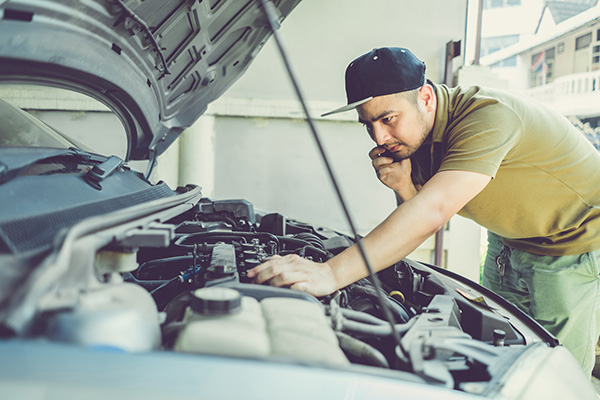
Doing your own car repairs can save money and give you a sense of accomplishment—but it’s not without risks. A single mistake under the hood can lead to costly damage or dangerous driving conditions. Whether you’re a seasoned DIYer or just starting out, avoiding the most common errors can keep your vehicle safe and roadworthy. Here are seven of the biggest DIY car repair mistakes and how to steer clear of them.
1. Skipping the Basics
Your owner’s manual isn’t just a glovebox accessory—it’s the foundation of proper vehicle care. Many DIYers skip it entirely, relying instead on guesswork or online advice that may not apply to their specific model.
Reading the manual helps you understand torque specs, recommended fluids, service intervals, and component locations. Skipping this step can lead to wrong procedures or damage that could have been easily avoided.
2. Using the Wrong Tools
Using incorrect or low-quality tools can do more harm than good. Stripped bolts, cracked components, and incomplete repairs often result from improvising with whatever’s on hand.
Invest in the right tools for the job—torque wrenches, jack stands, specialty sockets—and always prioritize safety over speed. If a repair requires something you don’t have, it may be worth letting a pro handle it.
3. Misdiagnosing the Problem
Just because your car makes a certain noise or throws a check engine code doesn’t mean the fix is straightforward. Many issues have overlapping symptoms. A misdiagnosis can lead you to replace perfectly good parts or miss the actual cause.
Before diving in, do thorough research and consider scanning the vehicle’s diagnostic codes properly. When in doubt, consult a technician. It may save you time and money in the long run.
4. Disconnecting the Battery the Wrong Way
Many car repairs involve disconnecting the battery, but doing so incorrectly can damage sensitive electronics or trigger warning lights. Some vehicles require a specific sequence when reconnecting the battery to avoid errors.
Always disconnect the negative terminal first and reconnect it last. For newer cars, consider using a memory saver device to preserve radio presets, seat positions, and other settings.
5. Over-Tightening or Under-Tightening Bolts
One of the most overlooked aspects of DIY repairs is proper torque. Many parts, especially in the suspension or braking systems, require precise tightness. Over-torquing can damage threads or warp parts, while under-torquing may cause bolts to loosen over time.
Use a calibrated torque wrench and follow the specs listed in your vehicle’s manual or service guide.
6. Ignoring Safety Precautions
From working under an unsupported car to skipping gloves or eye protection, safety shortcuts are unfortunately common in DIY auto repair. Serious injuries happen when basic precautions are ignored.
Always use jack stands on a level surface, wear protective gear, and ensure your workspace is well-ventilated—especially when working with fuel, oil, or brake cleaner.
7. Not Knowing When to Call a Professional
Some repairs—like internal engine work, transmission issues, or complex electrical diagnostics—are best left to trained technicians. Attempting them without the right tools, knowledge, or experience can result in far greater damage than you started with.
There’s no shame in seeking help. A quick consultation or inspection can prevent costly do-overs or long-term problems.
Euro Car Tech – Your DIY Backup Team in Arlington, TX
Whether you're tackling a simple fix or something more advanced, Euro Car Tech in Arlington, TX, is here to help you get it right. From expert diagnostics to second opinions and professional-grade tools, we’re the trusted backup team for DIY car enthusiasts. Don’t let a small mistake turn into a major repair—stop by or call us today for guidance you can trust!